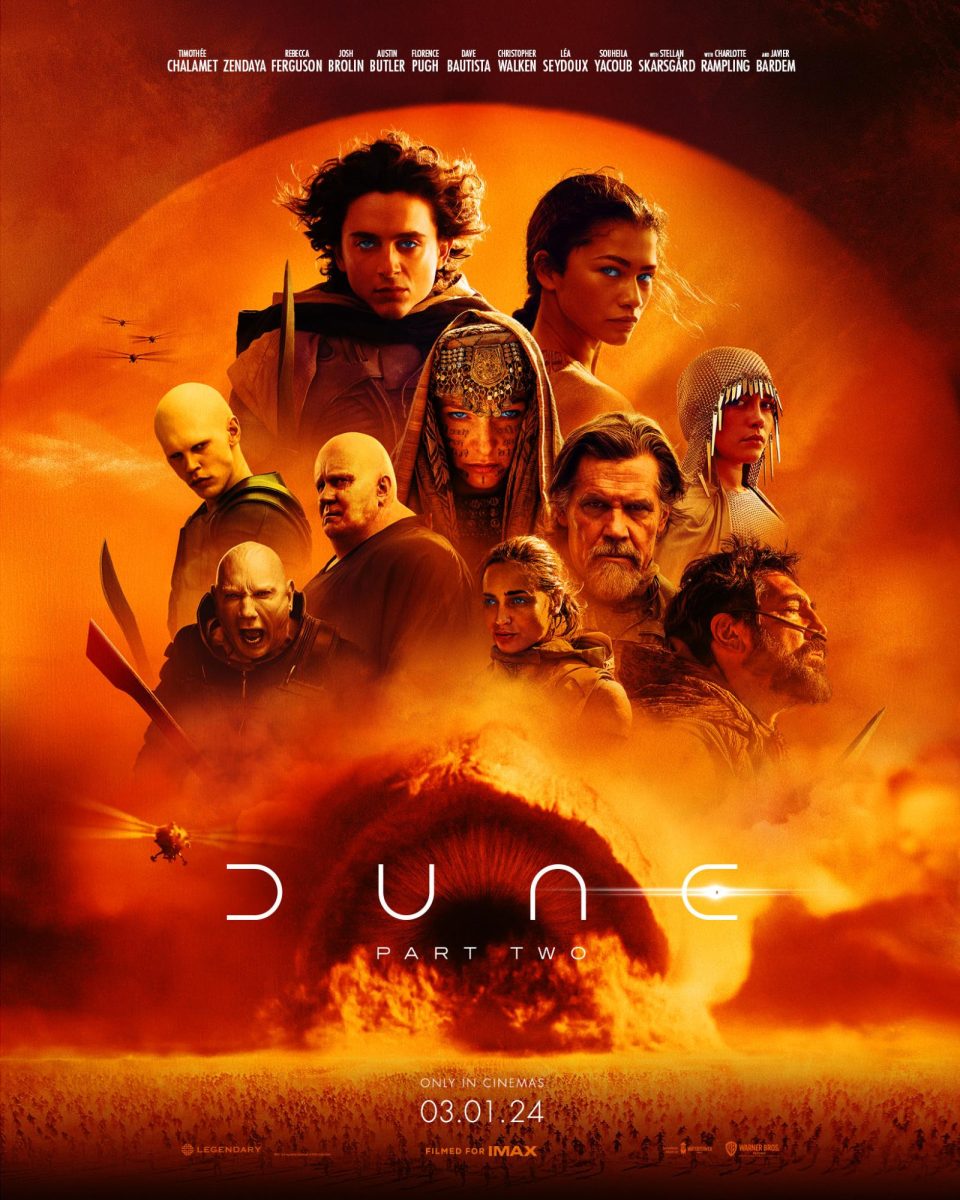
Four years after “The Irishman,” Martin Scorsese has returned with another sprawling three-and-a-half-hour true crime epic. Based on the historical novel of the same name, his new venture, “Killers of the Flower Moon,” tells the story of the Osage Indian murders. The series of deaths occurred between the 1910s and 1930s in the Osage Nation after oil was discovered on their reservation. According to the film, the Osage became some of the richest people per capita in the world, and the neighboring white men wanted their shares of the wealth.
Although the film has received widespread critical acclaim since its release, it suffers from an extensive runtime. The film’s approach to these horrific acts of violence lacks the proper nuance and depth necessary to address this historic tragedy.
Despite these shortcomings, there is much to commend in this film. The biggest positive of this film is Lily Gladstone’s stunning portrayal of Mollie Burkhart. Mollie, a member of the Osage Nation, was unwittingly married to one of the killers who murdered many of her family members. Gladstone is devastating in her role, both captivating and impossible to watch. The emotion that she conveys is difficult to bear yet so captivating that it’s impossible to look away.
Other notable performances come from Robert De Niro as William Hale and Jesse Plemons as FBI agent Tom White. This is the tenth collaboration between Scorsese and De Niro over a 50-year span, demonstrating Scorsese’s continued ability to bring out an incredible performance from De Niro. William is the primary antagonist in the film, acting as the mastermind behind the murders. But, he is also a prominent member of the community, using his wealth and status to contribute while hiding his actions. De Niro delivers an unsettling performance, constantly shifting between threatening, conniving, manipulative and affable demeanors.
Despite some of the film’s weaker acting performances, Plemons continues to deliver stellar performances throughout his decades-long career; “Killers of the Flower Moon” is no exception. Although Plemons’ FBI agent, Tom, does not appear until the film’s third act, his impact is immediate. He knows how to control a room without others even realizing. His performance is subtle yet strong, boosted by the quicker pace of the third act.
The film is structured similarly to Scorsese’s other crime films, which include “Goodfellas” and “The Wolf of Wall Street.” The first act introduces us to the characters and their world, the second shows the criminals at the top of their game and the third portrays their inevitable fall. The swift progression of the third act represents the anxiety that the criminals feel as their worlds crumble, and they face some form of justice for their actions.
One of the film’s biggest misses is — surprisingly — Leonardo DiCaprio’s character Ernest Burkhart, a simple-minded man who is manipulated by his uncle, William, to participate in the killings. Dicaprio’s performance does have its strong points, especially as Ernest’s relationship with Mollie develops. Throughout the lengthy film, however, the character becomes grating.
DiCaprio does his best with what he is given. Unfortunately, Ernest toes a weird line where it is unclear if the viewer is meant to feel sympathy for him. DiCaprio bears a look of near-constant confusion as he is manipulated by his uncle but also willingly partakes in the murders. He is nearly illiterate, unable to read a children’s book, but is smart enough to tamper with his wife’s medicine. Attempts to humanize Ernest come across as tone-deaf as well, with him often depicted as a malicious murderer.
However, the biggest flaw of the movie is its treatment of the Osage victims. Mollie is the only Osage character with depth — her portrayal is mostly defined by her relationship with Ernest and her anguish from the murders. It seems that she has a strong relationship with her family, but it is poorly conveyed as her family members’ characters are underdeveloped, acting more as caricatures than nuanced individuals.
This lack of development is apparent due to the film’s lengthy runtime. It is disappointing that in the entire duration, they could not flesh out the Osage characters more. We barely even know the names of the numerous victims. Their identities, personalities, passions and relationships remain shrouded in mystery. These characters are entirely defined by the circumstances surrounding their murders. The tragedy is thus told through the lens of the white men who murdered the Native Americans, an ironic testament to the never-ending cycle throughout American history.
The film pays a similar lack of attention to the victims as Scorsese has paid in his previous films. However, in “Goodfellas” and “The Wolf of Wall Street,” the victims are people who have also done wrong. In “Goodfellas,” Henry Hill is involved in the killings of other gang members, and in “The Wolf of Wall Street,” Jordan Belfort is scamming other Wall Street brokers who have already profited from scamming people. Yet, in “Killers of the Flower Moon,” the victims are innocent. Their only “crime” is having money and property that William wants. So, it is disappointing that they are not even granted the basic respect of being named.
As more filmmakers tell the stories of individuals who are historically underrepresented in Hollywood, there are growing concerns about diverse viewpoints in storytelling. Gladstone highlighted the problems faced by underrepresented groups, as working alongside well-established filmmakers is often necessary to secure funding for these projects. The film’s documentation of this history is admirable, as it attributes blame and conveys it to the viewers; but, it is not without criticism.
Mohawk actress Devery Jacobs emphasized that Indigenous people have identities beyond their historical grief, trauma and atrocities. The concern is the way Indigenous people are portrayed in the film traps them in the role of an eternal victim, defined only by their murder. Although there is a brief scene towards the end showing the tribe dancing in a contemporary context, it does little to alleviate the relentless victimization throughout the rest of the film.
Despite featuring strong directing from Scorsese and many gripping performances, “Killers of the Flower Moon” is marred by its expansive runtime. The film raises awareness about Osage history and explores an often overlooked aspect of American history, but in the end, the portrayal of its victims lacks depth and respect. Your time would be better spent researching Osage history to gain an in-depth understanding of the murders.


















